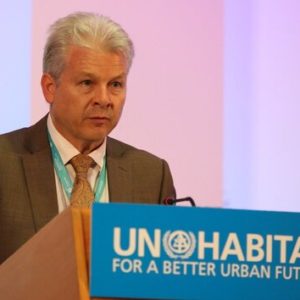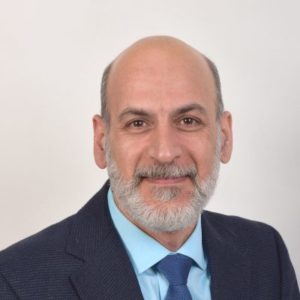Event Virtual
UN System Response to Marine Litter and Plastic Pollution | Geneva Beat Plastic Pollution Dialogues

13 Jan 2022
14:00–15:30
Venue: Online | Webex
Organization: Geneva Environment Network, United Nations Environment Management Group
The Geneva Beat Plastic Pollution Dialogues aim to facilitate further engagement and discussion among the stakeholders in International Geneva and beyond. In addition, they intend to address the plastic crisis and support coordinated approaches that can lead to more efficient decision making. This session, organized in partnership with the United Nations Environment Management Group (UN-EMG) and GRID-Arendal, featured the launch of the UN-EMG Report on mapping the UN response to marine litter and plastic pollution.
About the Dialogues
The world is facing a plastic crisis, the status quo is not an option. Plastic pollution is a serious issue of global concern which requires an urgent and international response involving all relevant actors at different levels. Many initiatives, projects and governance responses and options have been developed to tackle this major environmental problem, but we are still unable to cope with the amount of plastic we generate. In addition, there is a lack of coordination which can better lead to a more effective and efficient response.
Various actors in Geneva are engaged in rethinking the way we manufacture, use, trade and manage plastics. The Geneva Beat Plastic Pollution Dialogues aim at outreaching and creating synergies among these actors, highlighting efforts made by intergovernmental organizations, governments, businesses, the scientific community, civil society and individuals in the hope of informing and creating synergies and coordinated actions. The dialogues highlight what the different stakeholders have achieved at all levels, present the latest research and governance options. In addition, the dialogues encourage increased engagement of the Geneva community in the run-up to various global environmental negotiations, including UNEA-5 in February 2021 and February 2022.
Building on the outcomes of the first series of dialogues and the recent policy developments, the Geneva Environment Network is hosting a second series of events to facilitate further engagement and synergies on tackling the plastic crisis. These events are held in collaboration the Basel, Rotterdam and Stockholm Conventions Secretariat, the Center for International Environmental Law, the Global Governance Centre at the Graduate Institute, IUCN, Norway, Switzerland, and the Forum on Trade, Environment & the SDGs (TESS).
About this Session
Plastic pollution has become a global concern, as our planet is drowning in plastic waste and microplastics. The dramatic consequences of plastic pollution on biodiversity, human health, economic activities and livelihoods cannot be left unaddressed. As plastic production is expected to continue rising exponentially in the coming decades, the need to develop effective solutions at the local, national, and global level is pressing.
This global challenge has been recognized by the UN Environment Assembly (UNEA). In 2017, an Ad Hoc open-ended Expert Group on marine litter and microplastics (AHEG) was established to explore potential response options for addressing the issue of marine litter and microplastics moving forward. In parallel, various other initiatives have been established within the UN system to international awareness of the issue of marine litter and to provide recommendations and technical assistance to Member States.
Upon a mandate given by UNEA4, the United Nations Environment Management Group (EMG) contributed to the work of the AHEG by providing a mapping of all relevant UN agencies, programmes, initiatives and other sources of expertise relating to marine litter, including plastic litter and microplastics. This comprehensive mapping aims to contribute to a better understanding of activities across the UN and related entities, identify synergies and opportunities for potential collaboration among UN entities and strengthen the base for improved coordination and joint programmatic initiatives and planning on marine litter and microplastics in the UN System.
A new report released by the UN Environment Management Group, “Addressing marine litter and microplastics: UN system-wide contributions”, shows that the UN System is committed to tackle the challenges presented by global plastic pollution, and to promoting and coordinating action to address it holistically through the UN system and in action on the ground. Over 40 UN entities are supporting Member States in reducing and addressing marine litter and microplastics. These activities are effective because the UN System possesses considerable expertise across a range of relevant disciplines.
This event showcased how UN Agencies are working collaboratively to help countries address the issue systemically across the lifecycle. It suggested how this collaboration could be further strengthened vertically and horizontally, to help institutionalize innovative and circular approaches to the management of plastics in a more sustainable way.

Speakers

H.E. Amb. Tine MØRCH SMITH
Permanent Representative of Norway to the UN and other International Organizations in Geneva

Juliet KABERA
Director General, Rwanda Environment Management Authority

Susan GARDNER
Director, Ecosystems Division, UNEP

Rafael TUTS
Director, Global Solution Division, UN-Habitat

Lev NERETIN
Environment Workstream Lead, Food and Agriculture Organization

Carolyn DEERE BIRKBECK | Moderator
Director, Forum on Trade, Environment & the SDGs (TESS), & Senior Researcher, Graduate Institute’s Global Governance Centre
Summary
Opening Remarks
H.E. Amb. Tine MØRCH SMITH | Permanent Representative of Norway to the UN and other International Organizations in Geneva

- Norway has the presidency of the 5th UN Environmental Assembly, where we will work to adopt a mandate for negotiating a global agreement on plastic pollution to guide our common action, targeting the whole lifecycle action.
- Plastics is not just plastic. Effective measures across the lifecycle of plastics means that we need to identify measures ranging from production and design of plastic products, to sound environmental waste management, awareness raising and capacity building.
- Though challenges and solutions are different across the world, we believe that the commitment in a new agreement should be the same for all.
The UN System has a lot to offer to support a common priority of addressing plastic pollution across its lifecycle. The report highlights this and the benefits of synergies and system-wide cooperation across the UN. Interagency cooperation is key when addressing a complex issue such as marine litter and plastic pollution.
- Preventing and reducing plastic pollution is on top of Norway’s environmental agenda. Since 2014, Norway has pushed for stronger global commitment to address marine litter and plastic pollution, with the new global agreement as the most effective solution. Norway also participates in WTO’s initiative on plastic pollution, and we believe that this initiative can contribute positively to the UN process.
- We can build on the experiences mentioned in the UN EMG report as we prepare for the negotiations for a new global agreement on plastic pollution.
Juliet KABERA | Director General, Rwanda Environment Management Authority

- The UN EMG report is an important contribution to the efforts to beat plastic pollution and provides practical recommendations to scale up the work.
- For more than two decades, Rwanda has prioritized environmental protection and conservation. This focus on sustainable development and ensuring a healthy environment led the country to take meaningful action on plastic pollution. In 2004, Rwanda banned plastic bags and specific types of plastic packaging, after an assessment of the negative impacts of these products on human health and environment. Since then, we have also banned single-use plastics and exploring alternatives. This experience has taught us the importance of national, regional and international collaboration to beat plastic pollution.
There is a need to increase the awareness and understanding of dangers of plastic pollution as well as the solutions and technologies to fast track development of alternatives. We need to foster behavioral change in communities by investing in grassroots initiatives. We need to put in place robust legal frameworks at both national and global levels. Because plastic pollution is a transboundary issue, we can only solve it by working together.
- Rwanda actively participated in the Ad Hoc open-ended Expert Group on marine litter and microplastics, established by UNEA4. The group’s report identified the main barriers and suggested options to take at a national, regional, and global level. Following robust conversations, we are please with the process towards an international legally-binding instrument on plastic pollution. The draft resolution by Rwanda and Peru recognizes the transboundary nature of plastic pollution and the need to tackle it at source.
- Circularity is needed to have any chance of building a sustainable and regenerative global economy. We hope that all countries will agree to take the next practical and ambitious steps of negotiating the global treaty.
Introduction and Setting the Scene
Carolyn DEERE BIRKBECK | Director, Forum on Trade, Environment & the SDGs (TESS), & Senior Researcher, Graduate Institute’s Global Governance Centre | Moderator

On a topic that is as urgent, complex, and multidimensional as the plastic crisis, dialogues like these are vital to strengthening engagement and momentum needed for international cooperation.
- With the scale and urgency of the plastic pollution challenge, it is fantastic to see countries as diverse as Norway and Rwanda providing consistent leadership on the issue. These countries are not alone, but are part of a growing group of more than a hundred governments pursuing a new global agreement on plastic pollution, in particular their efforts to launch negotiations on an agreement at UNEA this year.
- They highlighted the critical role of the UN System in supporting efforts of members to tackle plastic pollution, and the many ways in which government need and benefit from the support of international organization.
- Stakeholders (research communities, civil society and the business sector) also have a strong interest in greater UN system-wide coordination and have much to bring to the table. They have been vocal in driving analysis of the crisis, helping us understand that addressing it will require a lifecycle and systems-change approach. Latest research highlights that we need to use all the levers available to transform the plastic sector and the plastic pollution: upstream and downstream, production and consumption, waste management and reuse. We need to better connect the dots.
- To achieve this, we need the UN system and the wider family of international organizations to work more collaboratively to help member States and stakeholders to connect the dots. Our starting point today is the UN EMG report, Addressing marine litter and microplastics: UN system-wide contributions.
- The UN EMG is a UN system-wide coordination body on the environment. It provides a forum for knowledge exchange and promoting system-wide policy coherence, synergy and collaborative and flexible approaches to environment issues in the UN system. It is an excellent example of the kind of work that is required to underpin and serve efforts of coordination across the UN system. The panel of experts today will speak of this effort and share their perspectives on the role of the UN system in supporting countries in the context of the ongoing UNEA deliberations on the global agreement and their views on the prospects and priorities for more cooperation.
Remarks on the Report
- An exciting and useful report not only in terms of content, but as it can spur dialogue and reflection on how we can do better, act faster, and deliver more meaningful reductions in plastic pollution.
- Stakeholders from around the world are calling on the UN to exercise leadership, maximize effectiveness and support their efforts on the ground.
- The report highlights not only the scale of the plastic pollution problem in terms of the marine environment, but it links this to wider pollution challenges, noting that it has dire consequences for human health, global economy, biodiversity and climate. The report addresses the complexity of the current plastic crisis and its interlinkages with other challenges.
- Drawing on the guidance of the report of the Ad hoc Expert Group on Plastic Pollution, it recognizes that we must consider impacts and opportunities at each step of the lifecycle of plastics.
- The report also examines human activities from sea to source. It goes further to consider human activities related to harmful and toxic chemicals to plastic pollution in soil and air, the carbon footprint of plastics, and issues on labor, human rights, and development considerations. The report is broad in its thematic scope.
- The report also provides an overview and analysis on how the various parts of the UN system are involved in tackling plastic pollution.
- More than 40 UN entities have expertise across a range of disciplines to support member states in their efforts to reduce marine litter and plastic pollution: raising international awareness, providing technical assistance, gathering evidence, providing analytical studies, and supporting activities on the ground.
- Covers the fields of health, human rights, environmental justice, gender impacts, trade and development, environment and infrastructure, among others. It provides extensive data on what agencies in the UN system and other international organizations are doing in this space. It provides an important foundation in further and more integrated interagency cooperation.
- The report does not analyze the range of intergovernmental activities underway beyond the UN system, including at the regional level. It did not aim to cover the efforts and the work of the stakeholders as well. This can be an area for strengthening work in the future.
- The report makes a set of useful recommendations for collaborative and coordinated actions through the UN systems. If we see this new report towards expanding UN’s system-wide coordination, I am delighted to support a next step by having today’s experts to reflect on the report’s recommendations and to provide their recommendations on opportunities to take the agenda forward.
Panel Discussion
Rolph PAYET | Executive Secretary, Basel, Rotterdam and Stockholm Conventions

- In my role as Executive Secretary of the Basel, Rotterdam and Stockholm Conventions (BRS), I welcome the EMG report that recognizes the work of the UN System in supporting countries to tackle plastic pollution, but also identifies cooperation gaps that, if addressed, could result in greater impacts.
- The BRS Conventions are global multilateral environmental agreements (MEAs), which share the common objectives of protecting human health and the environment from hazardous chemicals and wastes. To contextualize, the Basel and Stockholm Conventions are administered by UNEP, whereas the Rotterdam Convention is jointly served by the UNEP and FAO.
- The adoption of the Plastic Waste Amendments by the Basel Convention COP in 2019 is a successful example of the role of the UN, as an intergovernmental entity, in addressing global issues. The new entries to Annexes II, VIII and IX of the Basel Convention became effective on 1 January 2021 for the Parties to the Basel Convention that have not submitted a notification of non-acceptance, and its enforcement will make global trade in plastic waste more transparent and better regulated. For this reason, we support the development of a global plastic treaty that builds upon and complements the Basel Convention and other already existing regional and global agreements as well as national initiatives that help in turning the tide against plastics not only in the ocean, but as well as its impacts on land, soil, wildlife and humans.
- However, the UN cannot solve global issues only by adopting new legally binding treaties such as a potential global treaty on plastic pollution; or amending existing ones as needed from time to time such as through the Plastic Waste Amendments. The UN must mobilize stakeholders. The Conference of the Parties to the Basel Convention, for instance, has also established the Plastic Waste Partnership that may facilitate mobilization of resources, interests and expertise, from all stakeholders, business, government and civil society, in order to improve and promote the environmentally sound management of plastic waste at the global, regional and national levels and to prevent and minimize its generation.
- The UN must develop guidance and tools to support countries. The Basel Convention has developed the practical guidance on the development of inventories of plastic waste, and the technical guidelines for the identification and environmentally sound management of plastic waste and their disposal (currently being updated), among many others. The UN must build national capacity to implement obligations, as countries have their own specific needs. We have organized trainings to ensure that they are fully aware of the Convention provisions, mechanisms, tools and guidance already available. It is important that we work with them.
- Finally, the UN must mobilize resources and pilot test innovative approaches that, if successful can be scaled up. The Secretariat of the Basel Convention has developed, fundraised, and implemented technical assistance projects such as those of the Small Grants Programme on plastic waste that targets 33 countries globally, working on topics such as certification of recycled plastic, plastic inventories, identification of alternatives to single use plastic, extended producer responsibility, among others.
- It is important that we have high-level political support in the UN, especially those who have the platform and the method to engage at the high level. The UN’s role is important in advancing advocacy, in setting the agenda and providing support across various national, regional and international levels. By having high-level meetings and dialogues such as this, I think we can easily push the needle as we engage politicians at the highest level.
- All this work has not been done in isolation. I take this opportunity to thank the governments of Canada, France, Germany, Japan, Norway, Sweden, Switzerland; the European Commission; the Norwegian Agency for Development Cooperation and the Norwegian Retailers Environment Fund for funding these and other initiatives. We are indeed closely collaborating with the FAO, the WTO, the UNEP Ecosystem Division, among others.
Action is happening and we need to make sure that our stakeholders are on board, while supporting and measuring the work on the ground to ensure that our actions are contributing positively and effectively.
Marcos ORELLANA | UN Special Rapporteur on Toxics and Human Rights

- I welcome the UN EMG report for two reasons.
- First, the plastic crisis involves various fields of knowledge. Effective responses call for the integration of various domains of knowledge that are implicated in this problem.
- Second, the report can help further strengthen coordination of UN agencies and groups working on plastics. This can help the various options already presented by the Ad-hoc Open-Ended Expert Group, including the new global legally-binding instrument on plastics in its entire lifecycle.
From the human rights perspective, what are the key challenges of plastic pollution?
- First, the plastics problem is not just about waste. As pointed out by H.E. Amb. Tine Mørch Smith, addressing plastics involves a lifecycle approach, which the report goes at lengths to highlight this.
- I wish to stress the upstream dimensions of the problem. In my report on plastics and human rights presented to the UN General Assembly, I analyzed and documented how each stage of the plastics cycle has negative adverse impacts on human health, environment, and the enjoyment of human rights, including extraction of raw materials, emissions and communities living around factories, the transport of products, exposure of users to additives, and waste, the most highlighted issue.
- Solutions need to tackle each stage of the plastic cycle.
- Second, the magnitude of the plastics problem globally. Annual global production of plastics is approaching 350 million tons, a staggering figure which continues to increase.
- Plastic is not merely an issue of waste management. It needs to be tackled in its lifecycle and its circularity. This brings the question of whether incremental change or tweaks in the margins can do the trick, or whether a change in paradigm is needed?
- This is where the Human Rights Council in October adopted and recognized the human right to a healthy environment for everyone, including the right to a toxic-free environment. Guided by this, I advocate that plastics may be critical to society in certain uses only but not in ubiquitous uses that are littering the seas and societies. If there is an approach that identifies essential and critical uses of plastic, this can begin to change the paradigm on plastic use.
- Third, the need for a global instrument, which the report presents compelling evidence on this. With coordination and transboundary natures of the problem, the global environmental dimensions of the plastic crisis are also important to look at.
- Marine litter affects coastal communities.
- Bioaccumulation and long-range transport of persistent organic pollutants that are added to plastics.
- The funding and spread of false and misleading solutions, including open-pit burning and the touting for further recycling despite a lack of technologies and capacity to deal with the volume (apart from the generation of other forms of toxic concentration).
- International trade lifts plastic products that turn quickly into waste and burden the importing countries, most of whom are in the global South.
- Trade in waste containing plastic, where plastic in e-waste remains rampant.
The report brings all hands on deck of the UN to address the multifaceted plastic crisis. The report presents compelling evidence that further supports the UNEA resolution to kickstart negotiations of a global and legally-binding instrument on plastics that incorporates a rights-based approach.
Jean-Marie PAUGAM | Deputy Director-General, World Trade Organization

- We welcome the very good report of the EMG, a very interesting mapping of the complementarity of different actors and players of the UN system. We share most of the recommendations.
- Where is the WTO on plastics and what could we do to help the collective endeavor to fight plastic pollution? We are witnessing an acceleration of the involvement of the WTO and the issue. The discussions on plastic date back even from the creation of the organization there were some technical debates. However, it has only been since two or three years that some of our members are have really accelerated and started expressing interest in discussing plastic pollution, and launched Informal Dialogue on Plastics Pollution in 2019.
- They have established two things. First is that plastic pollution is a high-profile trade issue alluded to by the previous speaker. We have some figures from UNCTAD and the Graduate Institute released recently which estimated the volume of identifiable trade flows of plastic to more than USD 1 trillion a year, which could represent 5% of global trade in 2018, where trading plastic waste only represented about USD 3 billion last year.
- Second, several of our members came together voluntarily from across the world, from small island economies to large developed and developing countries, to try to tackle this issue. At the end of December 2021, 67 members elevated this dialogue to the level of a ministerial statement, setting a road map in support of global efforts to reduce plastic pollution. This is really a political commitment of a very significant number members and it was a very important milestone.
What then can we do to help? I first want to insist on the notion of helping because it’s clear for us that the WTO is not the place where a global strategy against plastic pollution will be elaborated. We are here to support by designing and implementing a trade component and a message of complementarity, which is also the message of the report, as seen last year when we had welcomed at the WTO a preparatory session of the next UNEA 5 session in cooperation with UNEP. Some of our members were afraid at one point of the risk of duplications of efforts, but we believe that the complementarity is there, and the risk of duplication is being lessened. I insist on this because this is one of the recommendations in the report: strengthening the mechanism of interagency information sharing and cooperation.
- It’s also very important to identify where the value added of the WTO could lie and what is it that we can do in terms of complementarity with other agencies.
- First, transparency and intelligence sharing. Our members are committed to improving data collections regarding trade flows and the supply chain. This is very important because just data collection on trade data, we have significant difficulties. Much of the data we rely on today does not cover hidden flows of trade in plastic flows which are embedded in products but not identifiable in custom data. The real volume and value of trading plastic could be up to 30% higher than what the figures shows. Our members are notifying us of the trade measures related to plastics that they take. This is a very important and valuable source of information that we can share. For instance if we dig into our database, we can confirm one point made by Mr. Orellana that it’s not just about waste. However, 80% of the measures notified to us still concern the downstream part of the plastic life cycle. So there is a little bit of a gap or not enough interest in the upstream part, namely the one which applies to primary plastics or plastic based inputs. This is the kind of thing that we can provide under intelligence sharing and transparency.
- Second item is regulatory cooperation. The WTO strongly encourages our members to base their measures on the international standards to facilitate trade. We look to the International Organization for Standardization (ISO) and others which might be instrumental in helping our members to fluidify and facilitate trade in a way which can help fight plastic pollution. We could inform and further cooperate with such institutions in developing standards and best practices on plastic management. As mentioned in the report, regulatory cooperation is also a way to ensure a good alignment between domestic policies on plastic and international trade policies.
- Third is technical assistance. While our 67 members are committed to sustainable plastic trade, we need to make sure that no one is being left behind. We have a very important interest from LDCs in plastic issues and actually LDCs are among the members which notified trade measures that they need technical assistance on recycling standardization and sustainable alternatives. Here is one area where the partnership with the UN system would be strategic for us. We could join forces to bring the technology and innovation and the capacity building and training capacities to LDCs and other developing countries.
- Fourth and last, the traditional and probably the most salient function of the WTO, is rulemaking. We are not there yet in our initiative on a plastic pollution dialogue. There is no rulemaking at the moment but at one point this might become one element of the contribution that the WTO could provide to broader initiatives on plastics. There are areas which are already being discussed through our members. For instance, one of them could be liberalization of products which are alternative to plastics. There are also issues of coherence between domestic bands: if you buy single-use plastic on your domestic market for instance, why would you export it? Can we put that into coherence? These are matters for discussions but we are not yet at the stage where there would be initiatives in rulemaking. The impetus will be possibly coming from other areas of the UN system and UNEA could also be important to us in that regard.
- These are briefly the areas where we can hopefully contribute. Count on us. We have our members very much mobilized on this issue and watching it.
Susan GARDNER | Director, Ecosystems Division, UNEP

- As Marcos said earlier, it’s clear that we need an all hands on deck approach across the UN system and that a common vision is really essential to ensure that those efforts are unified so. These dialogues are valuable in helping to advance that global conversation.
- The report identified that the interventions have been predominantly focused on downstream impacts: sea-based sources of marine litter or plastic at the end of its life cycle. There is a risk that the problem of marine litter and plastic pollution could be perceived as an ocean issue. At least certainly that was a concern in the past. This report underlines that we need to further enhance linkages between downstream and upstream life of plastics. We can do this by enhancing information sharing, enhancing collaboration visibility, and adopting a more comprehensive system-wide vision from source to sea. We have to really rethink how we make use and dispose of plastics taking into account that full life cycle.
- From the whole UN system, governments, civil society and private sector, a combination of response options is urgently needed at the national, regional, and international level to be addressing this as a transboundary issue. Because there’s so many sectors involved, there is truly a role for UN entities to work across the whole system to tackle these issues. The next UN Environment Assembly presents a global opportunity and a significant moment in time, as many countries have come forward already to endorse a ministerial statement calling for a decision at UNEA 5.2 later this year.
- We’re appreciative to the leadership of Rwanda and other countries that have begun to lead the way in terms of the vision for beginning the process of negotiations of a global agreement at UNEA. There appears to be general recognition among member states of the importance of a broad approach to plastic pollution, including the full life cycle of plastics. That’s a very good position to be starting from now and we stand ready at UNEP to support member states, providing science-based information and facilitating discussions that promote ambitious action on marine litter and plastic pollution.
- There are a few essential components to strengthening linkages and collaboration across that full life cycle.
- First, we need to significantly reduce the production of virgin plastics particularly single-use plastic products. We can’t do this without the full engagement of industry and finance (read more on plastics and finance).
- There’s just 20 companies that produce half of all single-use plastic products that are thrown away, and the plastic production is set to expand by about 30% over the next five years. This is also going to be increasing carbon emissions while it creates more waste. If these companies lean in on solutions and really come to the table, we can make amazingly rapid progress to truly reduce virgin plastic production.
- In addition you know there’s collaborative projects that UNEP has done with, for example with the Ellen Macarthur Foundation in the New Plastics Economy Global Commitment that demonstrates how you can involve all actors in the plastic value chain and approaches that are transparent that have agreed indicators to really shift the needle on consumption of virgin plastics.
- Synergies across the UN system in working with private sector on these early stages of product design on manufacturing on production can be meaningful in terms of supporting industry transitions. These include emphasizing safe and sustainable design as an important element in circular economy for plastics and reducing single-use plastics.
- Secondly, we have to recognize and value the benefits of action. A comprehensive circular economy could reduce the global volume of plastics entering our oceans by 80 percent over just the next 20 years and it could reduce virgin plastic production by 55% which would reduce greenhouse gas emissions by 25 percent. That’s enormous. There’s a strong economic incentive for action as well because transitioning to circular economy can reduce the cost of governments by about 70 billion US dollars between now and 2040. We can create about 700 000 additional jobs and a lot of those would be in the global South.
- Thirdly, while we’re closing the tap upstream, we have to continue to invest in effective waste management systems. We can’t lose sight on the work that still needs to be done. Improving solid waste management across the globe will make a huge difference in the amount of plastic pollution with significant effects on human health.
- First, we need to significantly reduce the production of virgin plastics particularly single-use plastic products. We can’t do this without the full engagement of industry and finance (read more on plastics and finance).
- Finally, I’d like to say that collaboration across the life cycle should also be a fundamental aspect of national action. As nations begin to consider the way forward on a global instrument, near-term action on plans happening at the national level remains critical to ensuring that we continue progress.
- This means proceeding with legislation on waste production, public procurement and information that’s available to consumers. It means interacting engaging with actions on plastics across the whole economy through physical measures that could include product content, manufacturing, trade, transport and waste management. It could also mean continuing with building up national source inventories, capacity building and promoting campaigns that engage citizens in solving this challenge and being a part of the solution.
- UNEP will continue to be there to support governments for those who request help in developing their national action plans.
- We’ve been piloting some new approaches in the design of these plans with an integrated effort that enables comprehensive and evidence-based approaches, including the concept of the full life cycle of plastics, including the core concept of source to sea and having analysis of legal frameworks that can strengthen that science-policy interface. We also recognize that it’s important to connect all work related to indicators such as SDGs, other international agreed frameworks that’s very important in terms of having an efficient approach.
- In summary, the report makes such a strong case for the holistic approach. We need to increase efforts to reduce the material production upstream while we continue to improve waste management downstream. This report reveals that national and local presence of UN entities is far from utilized. There’s tremendous support for member states for an INC process on a global agreement.
The Secretary-General has specifically identified the need to unite efforts across the UN system as well as with external stakeholders on really capturing solutions to the challenges that are posed by plastic pollution for more long-term programmatic strategic approaches that are anchored in a truly system-wide vision. If we get it right on plastic pollution, we’re going to help solve the triple planetary crisis.
Rafael TUTS | Director, Global Solution Division, UN-Habitat

- UN-Habitat has been engaging on this topic with cities and the broader topic of solid waste management, for more than two decades, promoting the importance of integrated approach to sustainable waste management for both public and environmental health. However, the uncollected and mismanaged solid waste is remaining one of the biggest challenges. It’s the major source of marine litter, and cities and local governments are responsible for improving their waste management system, but they often lack the resources the capacities and also the necessary baseline data for proper policy intervention and infrastructure investment.
- To address this, we have launched last year the Waste Wise Cities tool, a rapid assessment tool for cities’ municipal solid waste management performance. This tool uses SDG indicator 11.6.1 as a monitoring device, measuring the percentage of municipal solid waste that is collected and managed in a controlled facility in the city. This tool enables cities to obtain essential data for sustainable waste management planning, as well as getting to know their recovery value chain as well as the environmental control level of their waste management facilities. Since the launch of this tool UN-Habitat has applied it in more than 30 cities with various partners. The findings from the data collected so far suggests that slums and informal settlements are the major source of marine litter since they often lack access to waste collection service.
- If we take the example of Dar es Salaam, Tanzania, we applied the tool in 2021 where almost 6,000 tons of municipal solid waste are generated there daily, and only 36% of that is collected and less than 5% is managed in controlled facilities we can all imagine where a large part of that waste ends up in the ocean. Obviously in Dar es Salaam and also in Lagos, we found that 18 kilogram per person per year of plastic is leaking into the water systems which is equivalent to two PET bottles thrown in the ocean by every single person in Lagos per day. As such, the report for us is very relevant as it highlights that the UN system should make more efforts for data indicator and monitoring of marine litter and plastic pollution.
- UN-Habitat in its own way can offer one part of the solution in the stage of waste management in cities. City-level waste data is an essential building block in the entire plastic life cycle for monitoring the progress of our joint efforts to reduce marine litter. SDG indicator 11.6.1 can provide ample primary data on the ground which can also facilitate tangible actions at the city level.
I invite everyone especially the UN system agencies to use the Waste Water Cities tool as a standard methodology and this will facilitate collaborative action and thus help us close the existing solid waste data gap in cities around the world.
Lev NERETIN | Environment Workstream Lead, Food and Agriculture Organization

I share with the statement on circular economy source to sea approach. We have to think a lot about sources but also not forget about integrated waste resources management. Solving this issue will be impossible in particular to support our member states without a concerted and systematic response from the UN system at large. This report provides the first step towards that.
- Since plastic films have been introduced in 1960s, as in many sectors in agri-food sector, plastic use became an integral part of systems we’re dealing with. Plastic is adaptable and a low cost material that became omnipresent in every step of food systems from production to consumption and retail. A month ago, we released a report “Assessment of agricultural plastics and their sustainability: A call for action” which estimated that in 2019 agricultural value chains used 12.5 million tons of plastic products and three times of this amount were used in addition in food packaging. Of 12.5 million, majority is primarily used in crop production and livestock sectors which account for almost 10 million tons, followed by fisheries and aquaculture is 2.5 million tons followed by forestry at 0.2 million tons.
- Plastics is also a major source of contamination for natural systems, particularly the problem of microplastics and nanoplastics where as soon as the environment they literally there is no way to get rid of them. As the demand for agricultural plastics continues to grow, there is an urgent need to better monitor quantities of plastics products that are used. Monitoring and assessment are crucial for different agricultural sub sectors as well.
- There is still much more work needed to ensure that plastic is retained in the economy as long as possible. It also has the highest economic value, and therefore in this case promoting circular approaches. Some examples of solutions in the agri-food sector include adopting agricultural plastic practices which avoid use of plastics. For example, cover crops use thick plastic mulch films that can be easily removed from the field using biodegradable alternatives. Another is using recyclable boxes for transporting fish and aquaculture products. The most important measure would be to design alternatives and trying to reduce use of plastics in agri-food sector therefore the report provides irrefutable evidence to support action towards a better management of plastics.
- We also provided a number of recommendations how to fill significant knowledge gaps in agricultural. Plastic pollution is the crucial measure in helping deliver objectives of the UN Decade on Ecosystem Restoration which was launched last year by FAO and UNEP. This work is also central to our mandate specifically the environmental dimension of FAO, corresponding to our new strategic framework for the next decade. It also links to a priority program area on bioeconomy for sustainable food and agriculture and the tangible results in this area will tangibly contribute to a range of SDGs, specifically SDG12 on responsible consumption production.
- On that front we also are taking measures and this year one of the FAO statutory bodies, the Committee on Agriculture at its 28th session in July 2022 will discuss the issue of agricultural plastics, not only addressing specific knowledge gaps but also to look into specific policy response from our organization and how we can support our member states to scale up collaboration and coordination to combat in marine liter and plastic pollution including microplastics.
- We will continue working on sea-based sources of marine litter especially on abandoned, lost and otherwise discarded fishing gear. We will be strengthening implementation of the fair voluntary called voluntary guidelines for marking fishing gear, and also continue implementing GloLiter partnership together with the International Maritime Organization.
- We will continue collaboration with on sea based sources of marine data and overall looking forward to strengthening our engagement with the members of UN EMG as a specialized agency of the UN leading international efforts to achieve food security for all.
Open Discussion
Summary of Discussion
Carolyn DEERE BIRKBECK
- What we’ve seen today is a joint desire to work on shared priorities and some very strong hints of what is needed to do that. We’ve heard about the need for targets, for stronger work within member states, and to build coherence among their own ministries and approaches.
- To the question of plastic pollution, we’ve heard the need for more monitoring and measurement, for more capacity building, for deeper analysis, for pursuing a range of different policy solutions. We’ve also heard a focus on the importance of engaging with stakeholders from business and from the civil society sector in order to ramp up impact, and to learn about what is actually effective on the ground.
- At the outset of this panel, I underlined a critical role that the EMG has played in drawing together this report and supporting this dialogue among agencies today. Looking forward, I think it’s clear that we need the EMG and UNEP to continue to play an important role as a forum where this collaboration can be continued, coordinated, strengthened and deepened. Many speakers today I think would agree on the need for leadership on coordination so I’d also commend the Geneva Environment Network’s role today in enabling this conversation.
- We’ve heard that there’s a role for many different UN agencies with their various areas of expertise. We’ve also heard from speakers a clear sense that action is urgent and that we have a great opportunity at hand this year at UNEA and the forthcoming discussions on plastic pollution that can really help us bring about a common agenda that can help unite all of these actors and actions including those of the UN system.
- One of our speakers (Susan Gardner) also noted today that the UN Secretary-General himself is very much an advocate of system-wide coordination on the issue of plastic pollution and of making sure we harness the role of the range of stakeholders that will be vital to helping us transform towards a plastic pollution-free planet.
Closing Remarks
Hossein FADAEI | Head of the Secretariat, UN Environment Management Group

The report is not just one-off product. This process started as a result of a call from member states on the UN system and now we would like to present the results to UNEA 5.2 to be guided on the next steps. We hope that with this report we have provided a good mapping of UN system expertise and relevance to addressing plastic pollution and microplastics. Hopefully, we would then take the next steps forward with the guidance that we will receive from member states.
- In the last meeting of EMG heads in October, heads of agencies agreed to build on this process to create and launch a more comprehensive process on addressing pollution at large and building on what UNEA has already constructed on the implementation plan on a pollution-free planet. We hope to bring that mandate that call to the agenda of the UN system again and try to see how the UN system actually is responding to the pollution at land, water, air, as well as the chemicals, waste and other prospective areas and what needs to be done to synergize the efforts and hopefully produce an approach the pollution agenda in two to three years hopefully. The Secretary-General also recently has called upon us to immediately provide a common approach on plastic pollution within the next six months, and then build on that preparing a much wider process of pollution in the UN system for the next two to three years.
- The report has given us certain recommendations to follow. In that regard, a task team of the EMG will continue its work on the implementation of the recommendations. We would try to ensure that there will be common narratives being communicated to the brand as well as the other stakeholders, linking not only the environmental elements of the pollution but also the poverty and equality agendas through addressing plastic pollution. This is what the EMG is striving to do: bring multiple agendas that are all trying to achieve SDGs together. We would like also to integrate and implement this agenda within the UN system operation management itself for the UN to lead by example, by practicing what it preaches.
- As a result of this report, we could also help preparing maybe a reporting mechanism within the UN system on pollution that would allow agencies to regularly give us feedback on how they have integrated these things into their programming into their support to countries, but also in integrating that within their own system of management and operation.
- We will keep you and member states informed about the work that the UN system will be doing on this topic, and we hope to benefit again from the prospects of the member states who have attended this call to be able to ensure that this agenda is coherent with the member states’ agenda.
Additional questions not answered during the event
Q: There is a significant absence of the cultural & artistic presences found in both the communities and society generally. The art & culture sector is ready to mobilize on a very large scale level both nationally & internationally. This must be taken more seriously in the examination of solutions that are put on the table. They in fact both the key and the pathway into the societies -when will this be taken fully seriously?
The President of the United Nations General Assembly convened on 21 May 2021 a one-day high-level event on Culture and Sustainable Development in partnership with UNESCO. This event, which was held on the World Day for Cultural Diversity for Dialogue and Development, highlighted the resilient and transformative role of culture as an accelerator of SDG implementation, as well as the challenges within the cultural and creative industries and the broader cultural ecosystem. It, inter alia, provided the opportunity for Member States to share experiences, identify implementation gaps and solutions; and call for strengthening strategic cross-sectoral partnerships to unlock the transformative potential of culture in the recovery context and throughout the Decade of Action.
Q: One overaching principle regarding the plastic crisis is environmentally sound management (ESM), mostly related to waste issue but also include waste minimization and precautionary element. My question is, can ESM and its element as a principle goes beyond the waste dimension barrier and adapted into the global convention on plastic?
The principle of environmentally sound management of plastic waste is an important principle that also includes waste minimization and waste prevention. A new global agreement will be an important measure to ensure more sustainable management of plastics across the entire value chain of plastics. The Nordic Council of Ministers for Climate and Environment have prepared a Nordic report on how sustainability criteria for plastic products could form an important part of a new global agreement. This report looks at what sustainability entails for plastic products across the entire life-cycle from production and design through the waste and end-of-life phases. This report will be launched in 27 January in a Warm-up for UNEA5.2 event hosted by Norway and GRID-Arendal.
Video
In addition to the live WebEx and Facebook transmissions, the video is available on this webpage.
Documents
- Invitation
- Addressing marine litter and microplastics: UN system-wide contributions | UN EMG | January 2022
- From Pollution to Solution: a global assessment of marine litter and plastic pollution | UNEP | October 2021
- Assessment of agricultural plastics and their sustainability: A call for action | FAO | 2021
Links
- Plastics and the Environment | Regularly updated resource page by the Geneva Environment Network
- UNEP / UNEA | Ad hoc open-ended expert group on marine litter and microplastics
- EMG Task Team on Marine Litter and Microplastics
- Geneva Beat Plastic Pollution Dialogues
- GRID-Arendal | Warm up to UNEA 5.2: Towards a decision to launch negotiations for a new global agreement on plastics pollution
- Waste Wise Cities Tool | UN-Habitat | 2021
- Basel Convention on Plastics | BRS Secretariat




